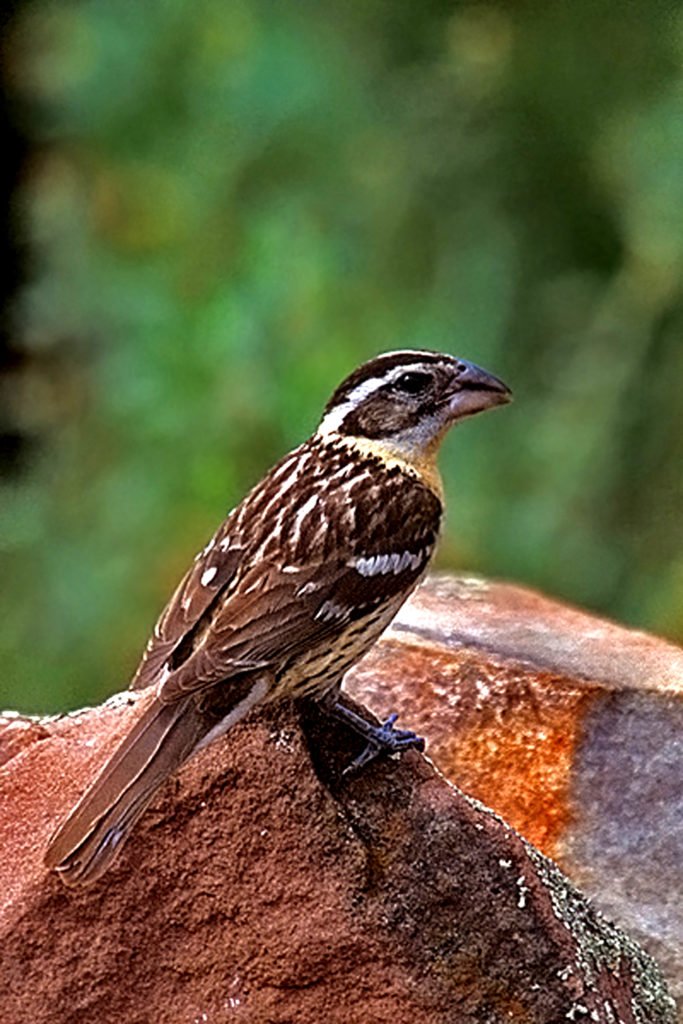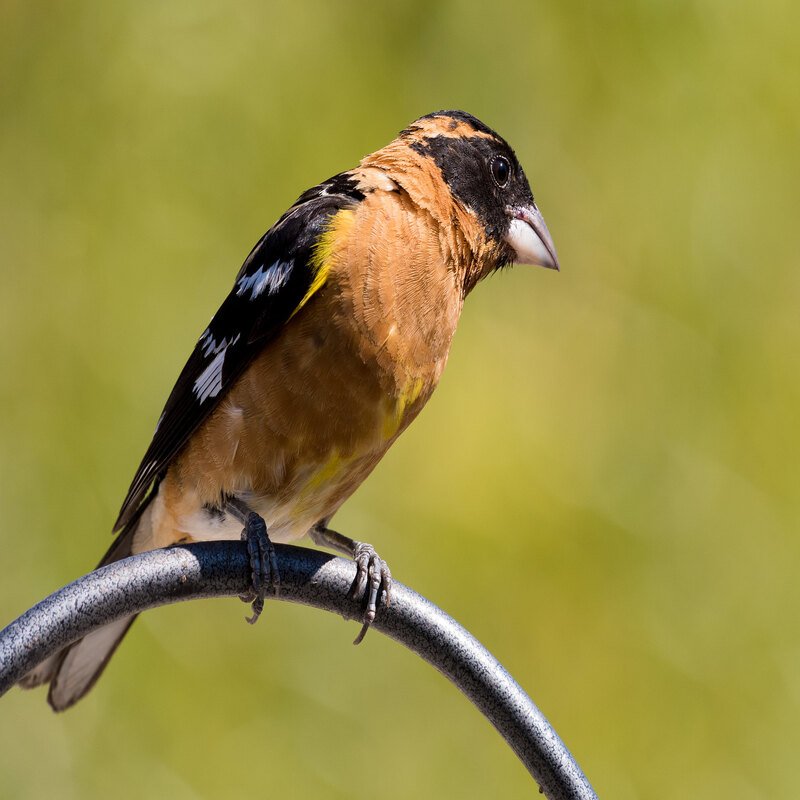Pheucticus melanocephalus or commonly known as a Black-headed grosbeak is a member of the Cardinalidae like the northern cardinal. These species are also sometimes considered conspecific with rose-breasted grosbeak. They are tame enough to be hand-fed in some areas.
Black-headed grosbeaks can breed with their close relatives, the rose-breasted grosbeaks, to produce offspring (Pheucticus ludovicianus).
Quick Overview: Pheucticus Melanocephalus – Black-Headed Grosbeak
Body size: Around 7-8.5 in(18-22cm) in length and weighed 43g(1.5 oz)
Main colors: Black, Orange-Brown, Yellow, Brown
Range: Western United States
Migratory Bird: Yes
Best time of the year to see in the U.S.: June, July, August, September
Conservation Status: Least Concern
Black-headed grosbeak Description
The black-headed grosbeak is a medium-sized seed-eating bird that has a large, stocky finch with a black-streaked, orange-brown back and a black head, wings, and tail, among other characteristics. The breasts are orange-brown in color, and the belly is yellow. The white patches on the wings are quite noticeable. Legs and feet are all blacks. The female lacks a black head and throat, and her upper parts are brown streaked with buff streaks, while her underparts are buff streaked with brown.


Size
These medium-sized bird is a 7-8.5 in(18-22cm) in length and weighed 43g(1.5 oz). Its wingspan could range around 12-13 in (30-33cm).
Feeding
These birds eat a variety of insects and invertebrates during the breeding season, including grasshoppers and codling moth caterpillars. Their large bill allows them to crack open small fruits like cherries, blackberries, raspberries, strawberries, elderberries, and mistletoe berries.
Habitat
Black-headed grosbeaks prefer deciduous and broad-leaved evergreen forests, and they prefer to nest in thickets on the edges of open woods, ponds, swamps, and streams, as well as in small trees. They have a wide range of habitat preferences.
Behavior
Black-headed grosbeaks are diurnal birds, active during the day and sleeping at night. Their flight pattern is characterized by rapid wing beats. During the breeding season, male and female black-headed grosbeaks will fight over territory or to protect eggs.
Pheucticus melanocephalus Scientific Classification
- Kingdom: Animalia
- Phylum: Arthropoda
- Subphylum: Chelicerata
- Class: Aves
- Order: Passeriformes
- Family: Cardinalidae
- Genus: Pheucticus
- Species: Pheucticus melanocephalus
Best time of the year to see
The best time of the year you could these birds in the United States is during the summer season (June to September).
Distribution of the Black-headed grosbeak Description in the USA
Pheucticus melanocephalus is found from the Pacific to the Rocky Mountain foothills. These birds spend the winter in Mexico and the rest of the year in the western US and Canada, from Montana to Baja, California. Black-headed grosbeaks can be found from Kansas to British Columbia as well.
The Black-headed grosbeak can be also found in the following western states in the United States – Alaska, Arizona, California, Hawaii, Idaho, Kentucky, Nevada, New Mexico, Oregon, Utah, Washington, and Wyoming.

